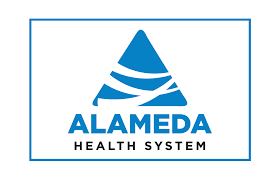Title Page
-
Site conducted
-
Conducted on
-
Prepared by
-
Department
-
Floor / Unit / Room
-
Location
Equipment Cleaning and Disinfection Schedule.
-
Are Intravenous pumps cleaned/disinfected daily or when visibly soiled and between patients? (EVS)
-
Are microwave ovens cleaned daily? (FNS)
-
Are wheelchairs cleaned daily or when visibly soiled? (Unit staff)
-
Are ice and water dispensers cleaned daily or when visibly soiled? (FNS)
-
Are thermometers cleaned between each patient's use? (Facility-approved disinfectant) (Unit staff)
-
Are glucometers cleaned between each patient's use? (Unit staff)
-
Are bronchoscopes cleaned between each patient's use? (Unit staff)
-
Are mattresses cleaned between each patient or when visibly soiled?
undefined
Environmental Infection Prevention Assessment Tool (General Environment)
-
Floors and walls are clean and free of spills, dust, stains, tape, and adhesive residue.
-
Furnishings (for example, mattresses, chairs, beds, tables) are free of holes, tears, tape, adhesive residue, stains, and rust.
-
Curtains, window blinds, vents, sinks and all horizontal surfaces are clean and dust free.
-
Ceiling tiles are free of stains, leaks, and holes.
-
All drinks are covered in patient care areas. No food is in patient care areas.
Supply and Medication Storage Areas
-
Clean supplies and equipment are clean and free of spills, dust, stains, tape, and adhesive residue and are kept separate from dirty supplies and equipment. If required by facility policy, clean equipment is labeled or bagged as clean.
-
No patient care supplies are stored underneath sinks or draining pipes.
-
Items used to prepare medications are clean. If single patient use, these are labeled (for example, pill cutters and crushers).
-
Sterile supplies are stored in a clean, dry enclosed area.
-
Supplies are stored 8 to 10 inches above the floor. All bottom wire racks in clean supply rooms have a plastic cover or solid bottom shelf.
-
No expired supplies (for example, hand sanitizer, soap, disinfectant wipes, disinfectant solutions).
-
Corrugated shipping boxes are not stored in clean and sterile storage locations in clinical areas.
Nourishment Areas
-
Refrigerators are clean, and freezers are defrosted.
-
Only patient food is stored in refrigerators and freezers found in patient rooms.
-
Refrigerated patient food brought from home is labeled with the patient’s name and date made or obtained. No food items greater than 3 days from the date made or obtained are found.
-
Refrigerator logs are complete and accurate.
-
Refrigerator temperatures are appropriate. Corrective actions are documented for temperatures falling out of range.
-
Microwaves, ice machines and other appliances are clean.
Linen and Waste
-
Clean linen is stored on clean, covered shelves or in enclosed cabinets separate from dirty linen.
-
Soiled linen is stored in appropriate plastic bags, in a covered hamper, or in the soiled utility room.
-
Sharps containers are not overfilled (that is, less than 3/4 full)
-
Trash is disposed of appropriately. Trash in soiled utility rooms is contained, not overflowing or lying on the floor.
-
Soiled utility room has at least one red receptacle for potentially infectious medical waste labeled with BIOHAZARD signage.
-
Soiled reusable instruments that require high-level disinfection or sterilization are pre-cleaned and stored and transported in a covered biohazard marked container (for example, endoscopes, surgical instruments). Soiled instruments are not on countertops or lying in sinks.
Environmental Services, Hand Hygiene, and Supplies
-
There is an adequate supply of liquid soap, alcohol-based hand sanitizer, and paper towels. No expired soap or gel is found.
-
Dispensers are functional.
-
Staff with direct patient contact do not have artificial or long natural nails.
-
Staff can verbalize how they know what equipment is clean or dirty and who is responsible for cleaning and disinfecting it.
-
Staff can verbalize correct wet contact times for facility-approved disinfectants and when to use each disinfectant (for example, bleach versus quaternary ammonia).
-
Staff can verbalize frequency of cleaning and disinfection of various pieces of equipment.
-
Environmental services staff can verbalize correct order if cleaning and disinfecting a patient room.
-
Staff use personal protective equipment correctly for cleaning and disinfection (for example, gloves are not worn in hallways or room to room).
-
Environmental services carts are secured.
-
Environmental services closets do not contain patient care supplies or supplies that may be compromised by moisture (for example, toilet paper). These items should be stored in a dedicated clean storage room or cabinet.
-
If cleaning and disinfection solutions are not ready to use, staff can verbalize correct dilution per manufacturer’s instructions. Measuring containers and required personal protective equipment are available and used.
-
Secondary containers for cleaners and disinfectants are labeled per facility policy and in compliance with OSHA requirements. Per OSHA 29 CFR 1910.1200(f), the employer shall ensure that each container of hazardous chemicals in the workplace is labeled, tagged, or marked with the following information:<br>Identity of the hazardous chemical(s) contained therein; and Appropriate hazard warnings, or alternatively, words, pictures, symbols, or combination thereof, which provide at least general information regarding the hazards of the chemicals, and which, in conjunction with the other information immediately available to employees under the hazard communication program, will provide employees with the specific information regarding the physical and health hazards of the hazardous chemical.
Deep Cleaning and Preventive Maintenance
-
Mattresses, pillows, and covers are in good repair, without holes, tears, or staining.
-
Bed frames are clean and in good repair (including side rails, hinges, casters or wheels, and bases).
-
The carpet, if present, is clean, without stains, and on a routine extraction schedule.
-
Ice machines and storage bins are clean and maintained.
-
Privacy curtains are visibly clean and on a routine cleaning/laundering schedule.








